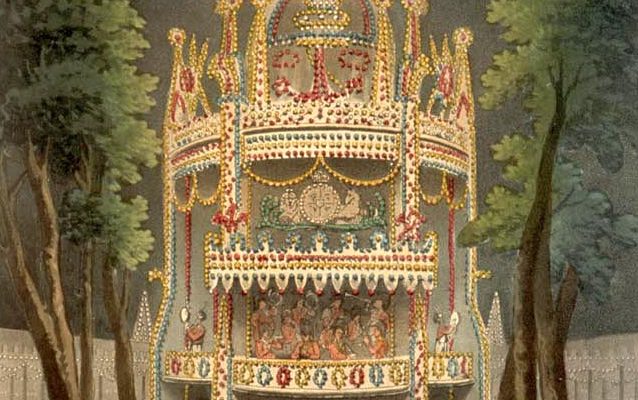Vauxhall, Ranelagh and New Walk
Pleasure gardens in the eighteenth century offered Georgian city dwellers a host of spectacles to enjoy in sumptuous and extravagant surroundings. London could boast a number of venues for pleasure seekers, prime amongst them being Vauxhall Gardens and Ranelagh Gardens. Vauxhall Gardens, formerly New Spring Gardens, was transformed in 1735 by William Tyres. Owing to the rich variety of entertainments on offer, as well as food and drink, Samuel Johnson described the gardens as being ‘peculiarly adapted to the taste of the English nation’. Here visitors, for a modest ticket price, could enjoy musical performances, art exhibitions, promenading, dancing and, at night, artificial illuminations. Such was the appeal of Vauxhall that the number of paying visitors who came through the gardens between 1740 and 1840 is estimated at ten million.
Vauxhall’s main competitor, Ranelagh Gardens in Chelsea, first opened in 1745, boasting acres of formal gardens with long sweeping avenues. Here visitors could marvel at the Chinese Pavilion, the fountain of mirrors, watch firework displays, as well as attend music concerts held in the Rotunda, for which music had often been specially written. Ranelagh also regularly held masquerade balls where guests could enjoy various polite – and perhaps often impolite – pleasures.
Responding to the popularity of promenading, York created its own type of pleasure garden in 1730. New Walk Terrace ran along the banks of the river Ouse. It was over a mile long and described by contemporaries as ‘one of the most agreeable public walks in the kingdom, for its great neatness, beautiful forms, and situation’ as well as its ‘pleasing view of the river, and of all the principal buildings in York’.

Source: In Pursuit of Pleasure: Entertaining Georgian Polite Society (Fairfax House, 2016)
